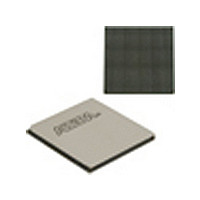EP4SGX530HH35C2N Altera, EP4SGX530HH35C2N Datasheet - Page 223

EP4SGX530HH35C2N
Manufacturer Part Number
EP4SGX530HH35C2N
Description
IC STRATIX IV FPGA 530K 1152HBGA
Manufacturer
Altera
Series
Stratix® IV GXr
Datasheets
1.EP4SGX110DF29C3N.pdf
(80 pages)
2.EP4SGX110DF29C3N.pdf
(1154 pages)
3.EP4SGX110DF29C3N.pdf
(432 pages)
4.EP4SGX110DF29C3N.pdf
(22 pages)
5.EP4SGX110DF29C3N.pdf
(30 pages)
6.EP4SGX110DF29C3N.pdf
(72 pages)
7.EP4SGX530HH35C2N.pdf
(1145 pages)
Specifications of EP4SGX530HH35C2N
Number Of Logic Elements/cells
531200
Number Of Labs/clbs
21248
Total Ram Bits
27376
Number Of I /o
564
Voltage - Supply
0.87 V ~ 0.93 V
Mounting Type
Surface Mount
Operating Temperature
0°C ~ 85°C
Package / Case
1152-HBGA
Family Name
Stratix® IV
Number Of Logic Blocks/elements
531200
# Registers
424960
# I/os (max)
560
Process Technology
40nm
Operating Supply Voltage (typ)
900mV
Logic Cells
531200
Ram Bits
28033024
Operating Supply Voltage (min)
0.87V
Operating Supply Voltage (max)
0.93V
Operating Temp Range
0C to 85C
Operating Temperature Classification
Commercial
Mounting
Surface Mount
Pin Count
1152
Package Type
FCHBGA
Lead Free Status / RoHS Status
Lead free / RoHS Compliant
Number Of Gates
-
Lead Free Status / Rohs Status
Compliant
Available stocks
Company
Part Number
Manufacturer
Quantity
Price
- EP4SGX110DF29C3N PDF datasheet
- EP4SGX110DF29C3N PDF datasheet #2
- EP4SGX110DF29C3N PDF datasheet #3
- EP4SGX110DF29C3N PDF datasheet #4
- EP4SGX110DF29C3N PDF datasheet #5
- EP4SGX110DF29C3N PDF datasheet #6
- EP4SGX530HH35C2N PDF datasheet #7
- Current page: 223 of 1154
- Download datasheet (32Mb)
Chapter 7: External Memory Interfaces in Stratix IV Devices
Memory Interfaces Pin Support
Memory Interfaces Pin Support
February 2011 Altera Corporation
f
f
f
1
A typical memory interface requires data (D, Q, or DQ), data strobe (DQS/CQ and
DQSn/CQn), address, command, and clock pins. Some memory interfaces use data
mask (DM, BWSn, or NWSn) pins to enable write masking and QVLD pins to indicate
that the read data is ready to be captured. This section describes how Stratix IV
devices support all these different pins.
If you have more than one clock pair, you must place them in the same DQ group. For
example, if you have two clock pairs, you must place both of them in the same ×4
DQS group.
For more information about pin connections, refer to the
Device Family Pin Connection
For more information about pin planning and pin connections between a Stratix IV
device and an external memory device, refer to the
Handbook.
DDR3, DDR2, DDR SDRAM, and RLDRAM II devices use the CK and CK# signals to
capture the address and command signals. Generate these signals to mimic the
write-data strobe using Stratix IV DDR I/O registers (DDIOs) to ensure that the
timing relationships between the CK/CK# and DQS signals (t
DDR3, DDR2, and DDR SDRAM devices or t
QDR II+ and QDR II SRAM devices use the same clock (K/K#) to capture write data,
address, and command signals.
Memory clock pins in Stratix IV devices are generated using a DDIO register going to
differential output pins (refer to
DIFFIO_TX, or DIFFIO_RX prefixes.
For more information about which pins to use for memory clock pins, refer to the
External Memory Interface
Handbook.
Guidelines.
Figure
7–2), marked in the pin table with DIFFOUT,
CKDK
in RLDRAM II devices) are met.
External Memory Interface
Stratix IV GX and Stratix IV E
Stratix IV Device Handbook Volume 1
DQSS
, t
DSS
, and t
DSH
in
7–3
Related parts for EP4SGX530HH35C2N
Image
Part Number
Description
Manufacturer
Datasheet
Request
R

Part Number:
Description:
CYCLONE II STARTER KIT EP2C20N
Manufacturer:
Altera
Datasheet:

Part Number:
Description:
CPLD, EP610 Family, ECMOS Process, 300 Gates, 16 Macro Cells, 16 Reg., 16 User I/Os, 5V Supply, 35 Speed Grade, 24DIP
Manufacturer:
Altera Corporation
Datasheet:

Part Number:
Description:
CPLD, EP610 Family, ECMOS Process, 300 Gates, 16 Macro Cells, 16 Reg., 16 User I/Os, 5V Supply, 15 Speed Grade, 24DIP
Manufacturer:
Altera Corporation
Datasheet:

Part Number:
Description:
Manufacturer:
Altera Corporation
Datasheet:

Part Number:
Description:
CPLD, EP610 Family, ECMOS Process, 300 Gates, 16 Macro Cells, 16 Reg., 16 User I/Os, 5V Supply, 30 Speed Grade, 24DIP
Manufacturer:
Altera Corporation
Datasheet:

Part Number:
Description:
High-performance, low-power erasable programmable logic devices with 8 macrocells, 10ns
Manufacturer:
Altera Corporation
Datasheet:

Part Number:
Description:
High-performance, low-power erasable programmable logic devices with 8 macrocells, 7ns
Manufacturer:
Altera Corporation
Datasheet:

Part Number:
Description:
Classic EPLD
Manufacturer:
Altera Corporation
Datasheet:

Part Number:
Description:
High-performance, low-power erasable programmable logic devices with 8 macrocells, 10ns
Manufacturer:
Altera Corporation
Datasheet:

Part Number:
Description:
Manufacturer:
Altera Corporation
Datasheet:

Part Number:
Description:
Manufacturer:
Altera Corporation
Datasheet:

Part Number:
Description:
Manufacturer:
Altera Corporation
Datasheet:

Part Number:
Description:
CPLD, EP610 Family, ECMOS Process, 300 Gates, 16 Macro Cells, 16 Reg., 16 User I/Os, 5V Supply, 25 Speed Grade, 24DIP
Manufacturer:
Altera Corporation
Datasheet:












